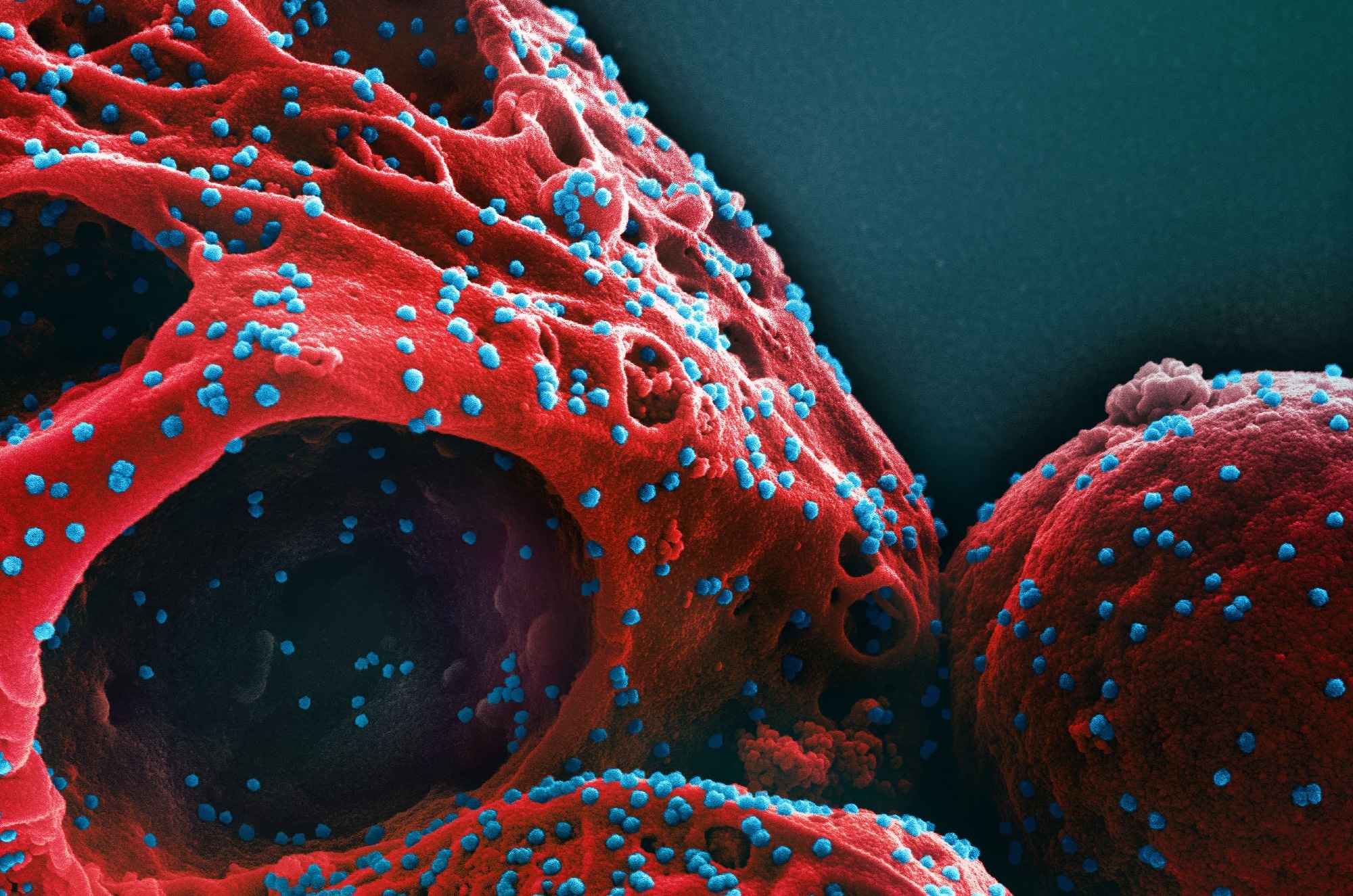A recent editorial published in the Journal of Virology summarized the evidence on severe acute respiratory syndrome coronavirus 2 (SARS-CoV-2) origin hypotheses.
Two leading hypotheses about SARS-CoV-2 origin are debated – direct zoonosis and laboratory leak. The former states that SARS-CoV-2 emerged due to a natural spillover from animals to humans, followed by sustained transmission in humans. According to the lab leak hypothesis, researchers created or cultured SARS-CoV-2, and an accidental exposure resulted in the pandemic.
 Editorial: A critical analysis of the evidence for the SARS-CoV-2 origin hypotheses. Image Credit: NIAID
Editorial: A critical analysis of the evidence for the SARS-CoV-2 origin hypotheses. Image Credit: NIAID
Scientific evidence alone cannot definitively provide an answer. Establishing the laboratory leak hypothesis requires evidence from the Wuhan Institute of Virology (WIV) that it was working on a CoV closely related to the SARS-CoV-2 Wuhan strain. If such work had been taken up at the institute, then initial coronavirus disease 2019 (COVID-19) cases could have been among WIV personnel. While China has refuted this, transparency is lacking.
Establishing the zoonosis hypothesis would require evidence of the spillover events. However, this is difficult as the spillover events might have been unnoticed. Besides, the levels of certainty to definitively prove either hypothesis differ significantly. Therefore, examining the best available evidence can only shed light on the viability of these hypotheses. As such, researchers in the present study posit and critically analyze several hypotheses on SARS-CoV-2 origin.
Hypothesis 1 – SARS-CoV-2 emerged from a lab-adapted CoV
If SARS-CoV-2 had a lab origin, the viral genome would contain signatures due to propagation in the lab. Many researchers have cultured human SARS-CoV-2 isolates over the last three years and have consistently observed the deletion of the furin cleavage site in the spike protein. However, early SARS-CoV-2 isolates contain an intact furin cleavage site, arguing against the hypothesis that SARS-CoV-2 was introduced into humans after culturing in the laboratory.
Hypothesis 2 – SARS-CoV-2 was produced in the lab
Although some reports suggest that SARS-CoV-2 contains hallmarks of recombinant DNA technology, this theory has been refuted, including by the United States (US) intelligence community. Recent studies suggest that amino acids N-terminal to the furin cleavage site, comprising the cleavage loop, are critical. The length of the loop and a glycosylation site define the cleavage site’s contribution to SARS-CoV-2 virulence. Since this was not understood before 2020, deliberately engineering the cleavage site to enhance viral pathogenesis was improbable without this information.
Hypothesis 3 – SARS-CoV-2 was a bat zoonosis introduced in humans
Bat species are hosts to diverse CoVs. Since the 2003 outbreak of SARS-CoV, bats have been known to serve as a CoV reservoir with the potential for spillover. Extensive molecular epidemiologic and surveillance efforts identified civet cats in Guangdong live markets as the proximal source of SARS-CoV. In turn, these cats were likely infected by bats.
While an intermediate host for SARS-CoV-2 is yet to be identified, a similar emergence is feasible. Phylogenetic analyses revealed a considerable evolutionary gap between closely related bat CoVs and SARS-CoV-2. For example, RaTG13, the most closely related bat CoV, differs from initial SARS-CoV-2 isolates by more than 1000 nucleotides, equivalent to a genetic distance of about 4%.
Therefore, RaTG13 is not a proximal ancestor. However, given the lack of transparency, viruses in the WIV lab could not be independently verified. Further, high recombination rates are observed within the Sarbecovirus subgenus. Recombination produces chimeric genomes, increasing CoV diversity and making ancestor tracing more complex.
Thus, recombination signatures in the SARS-CoV-2 genome do not necessarily point to zoonotic/laboratory origin. Anti-bat CoV antibodies were detected in individuals living near caves in China. Recently, antibodies against the novel rhabdovirus isolated from bats were detected in people living near the sampling site, contributing to the evidence that these animals can harbor viruses that infect humans.
Hypothesis 4 – Early COVID-19 cases suggest SARS-CoV-2 origin
Among the first 174 COVID-19 cases in December 2019, around 50% of them were linked to a market, and particularly, approximately a quarter was associated with the Huanan seafood wholesale market. None were scientists working on bat CoVs. The early phases of the COVID-19 outbreak clearly showed a link to this market. Further, early infections in Wuhan involved two SARS-CoV-2 lineages, suggesting multiple spillover events in humans.
Concluding remarks
Based on the existing evidence, it is unlikely that SARS-CoV-2 was a laboratory-adapted virus or was created in the lab. Likewise, available scientific data favor the zoonosis hypothesis. As new evidence emerges, the understanding of SARS-CoV-2 origin will evolve. However, it is also likely that the origin may never be conclusively known.